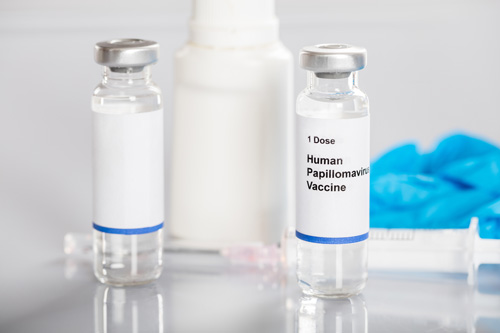
The Human Papillomavirus, or HPV, is one of the most common STIs in Canada. Up to 75% of Canadians will be exposed to it during their life, and anyone who has been sexually active is at risk. As such a common threat, Canadians should know the basics about the virus, and how to keep themselves and those around them safe.
What is HPV?
HPV is a family of many different types of related viruses, but the ones that are the primary concern for most people are HPV 16 and 18 that are transmitted sexually. These viruses can exist in an infected person without any signs or symptoms and still be transmitted to others. If symptoms do appear, however, the most common sign of infection is warts, which can appear in or around the sex organs.
While many people’s immune systems are capable of fighting off an HPV infection, making it only a temporary problem, HPV cells can also go dormant for years before resurfacing. Unfortunately, we don’t know everything about how HPV works and how our bodies fight it, but we know enough to see a connection between a simple infection and more dangerous illnesses.
HPV – What Are the Risks?
It might not seem like HPV causes many problems while dormant, but an infection could be the start of bigger health issues.
HPV and cancer:When HPV is active, it causes abnormal cell growth, often seen in the form of warts or small lesions. This abnormal growth pattern can easily transform into cancerous growths. Women with HPV are especially at risk for cervical cancer due to this uncontrolled, abnormal growing – in fact, almost all cervical cancers are connected to the virus. While many people are familiar with hearing about cervical cancer related to HPV, anyone with HPV is at a much higher risk for many other cancers, including cancers of the throat, oral cavity, penis, anus, vagina or vulva.
Other HPV risks: Even if cancer doesn’t develop from HPV, anogenital warts on and around the sex organs often caused by an infection can have a toll on people. While they aren’t necessarily dangerous themselves, people can experience significant emotional distress and discomfort as a result and must undergo treatments or procedures to get rid of them.

Staying Safe: Avoiding HPV
Avoiding HPV is the first goal in staying safe. If you don’t contract the virus, you won’t have to worry about the potential consequences of an infection.
There are multiple vaccines available for men and women that can help to reduce the risks of HPV. Even if you already have one type of HPV, the vaccines can still help protect you from other strains of the virus. Vaccines are a great way to reduce risk but they don’t shield people from all types of HPV, so other measures are still important.
The HPV virus is most commonly transmitted sexually, so practicing safe sex is very important to avoid contracting this STI. Men and women should consider how they can use various safe sex methods and barriers, like condoms, during sex to keep themselves and their partner(s) safe, and take discussing your sexual health with your partner(s) seriously.
Women are particularly at risk for cervical cancer from HPV and should get regular Pap tests with their doctors to ensure that they monitor their sexual health and risk factors. Early detection of HPV and cancerous growth can make treatment easier and more effective, possibly saving lives.
The initial symptoms for HPV can be minor or even nonexistent, resulting in many people not taking the virus as seriously as it might be. To avoid consequences from uncomfortable warts or even dangerous cancers, people should keep in mind how they can protect themselves with responsible sexual health and medical precautions.